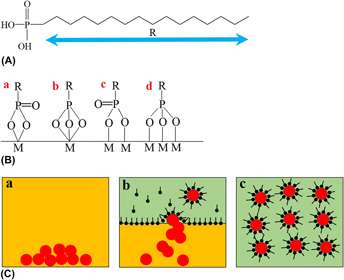Article contents
Liquid–liquid extraction of oxide particles and application in supercapacitors
Published online by Cambridge University Press: 28 March 2017
Abstract

Many material manufacturing techniques require the use of nonaqueous colloidal suspensions, containing well dispersed oxide particles and various water insoluble functional components. We report an efficient method for the direct transfer of MnO2 and titania particles, synthesized in water, to an organic solvent through the interface of two immiscible liquids. Particle agglomeration during the drying stage was avoided, and stable suspensions of nonagglomerated particles in the organic phase were obtained. The benefits of this method were demonstrated by the fabrication of advanced composite MnO2-multiwalled carbon nanotube electrodes, containing a polymer binder, for electrochemical supercapacitors with high active mass loading and high active material to current collector mass ratio. The electrodes showed a capacitance of 5.13 F/cm2 and low impedance. High extraction efficiency from concentrated suspensions was achieved by the use of an advanced extractor, which allowed strong adsorption on the particles by the polydentate bonding. The extraction mechanism is discussed.
Keywords
- Type
- Invited Articles
- Information
- Journal of Materials Research , Volume 32 , Issue 17: Focus Issue: Achieving Superior Ceramics and Coating Properties through Innovative Processing , 14 September 2017 , pp. 3242 - 3250
- Copyright
- Copyright © Materials Research Society 2017
Footnotes
Contributing Editor: Eugene Medvedovski
References
REFERENCES
- 8
- Cited by



